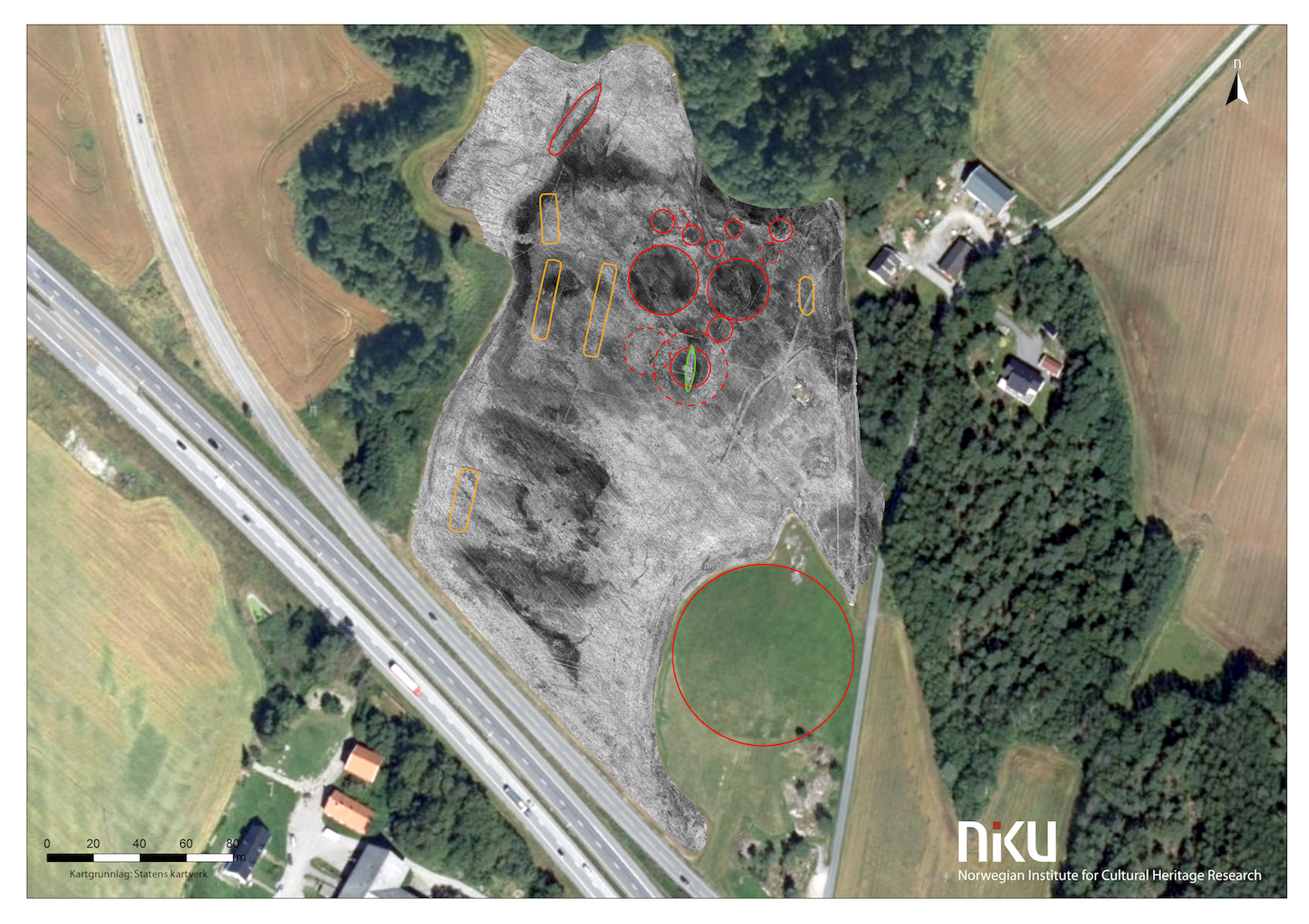
An extraordinary ancient burial scene discovered on the shores of the fjord near Oslo, Norway, has given archaeologists a deeper understanding of the wealthiest members of Northern European society in the first millennium AD.
The burial, initially uncovered by a local resident who applied for permission to build drainage ditches, has since been investigated by a team of six researchers led by Lars Gustavsen of the Norwegian Institute for Cultural Heritage Research. Their findings have now been published in a paper in the journal Antiquity.
At the center of the discovery at the Jell Mound, as it is known, is a boating vessel of some 70 feet, in which the dead were placed to guide them safely to the afterworld.
According to the Antiquity paper, a ship burial was “the ultimate expression of status, wealth, and connection in Iron Age Scandinavia,” making the site a glimpse into the lives of one-percenters from the era spanning around 500 BC–AD 1050.
The burial ship that emerged at the site measures some 70 feet long. Photo courtesy of NIKU, the Norwegian Institute for Cultural Heritage Research.
The site includes remains of an exceptionally large hall more than 120 feet long, where feasts and religious and political gatherings likely took place.
The structure, which would have been visible from some distance, likely represents an attempt by a community to establish dominance during a period when control of territory went back and forth between dynastic families.
The cream of Scandinavian society conducted “ostentatious burial rituals” there, as indicated by a burial mound about 30 feet high and nearly 100 by nearly 80 yards, which was created between the fifth and sixth centuries AD.
Earlier, yet-unstudied finds from the same site include copper alloy brooches and rings, along with coins and fragments of precious metals, including a gold berloque, a pendant typically linked with the burial of high-status women.
Evidence of later intrusion into the burial site suggests the desecration and removal of monuments to bygone figures.
There’s evidence that Vikings may have broken into the burial site at Jell Mound as part of well-organized intrusions, which suggest that the desecrations were intended as a political statement, rather than simple grave robbery.